A few of our stories and columns are now in front of the paywall. We at The Chief-Leader remain committed to independent reporting on labor and civil service. It's been our mission since 1897. You can have a hand in ensuring that our reporting remains relevant in the decades to come. Consider supporting The Chief, which you can do for as little as $3.20 a month.
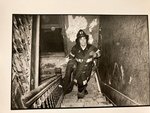
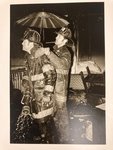
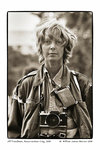
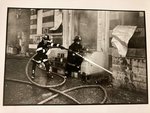
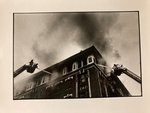
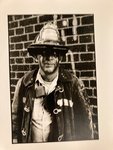
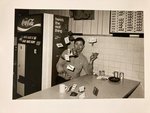
Every day, more fires in the South Bronx.
And every day, when Jill Freedman drove up to the firehouse, two cameras strapped to the short blonde curls falling on her neck, she got the same answer: “You shoulda been here.”
It was 1975, and blight was spreading south of the Cross Bronx Expressway. From Park Avenue to the Bronx River, abandonment and a near-complete breakdown of city services had turned dozens of once solid apartment buildings into derelict carcasses. Day and night, the firemen of Engine 82 and Ladder 31 sped through the devastated landscape, passing vacant tenements with electrical wires dangling from one building to the next, and rescuing people from burned-down dwellings with shattered windows and plundered plumbing fixtures.
By October 1977, when firemen from Harlem and the South Bronx gathered at Freedman’s run down apartment in Greenwich Village during a party, the 38-year-old photographer had become one of them. For months, she had accompanied them on their runs, stayed to document a fire’s aftermath and hung out during down time.
A self-taught photographer who got her start covering the Poor People’s Campaign encampment in Washington, D.C., in 1968, Freedman liked to linger. She immersed herself fully in the world of the people she photographed, whether circus performers, cops or city residents. “She didn’t have a personal life … dedicated everything to her work,” said Susan Hecht, her cousin’s daughter and one of the trustees of her estate.
“You can’t have a husband waiting at home and say ‘I won’t be home for a week because I’m staying with the guys.’ ”
‘She saw my soul’
From behind her camera, Freedman, a respected New York City documentary and street photographer who died three years ago at 79, got to know the hard lives of activists, “the old ways of Ireland,” documented life in a circus, capturing intimate moments both in the light and backstage, and city cops.
But she couldn’t stay in the firemen’s dorm.
As a woman — one of the few in the field of photojournalism at the time — Freedman wasn’t allowed in the firehouse. (The first female firefighters joined the FDNY in 1982.) Freedman disliked being identified as a “female” photographer. She lived by her own rules, smoked like a chimney and “could drink anyone under the table,” Hecht recalled. “She charmed her way in.”
Freedman started sleeping in the chief’s car, between the truck and the engine. For a year, she spent six days and nights a week at the Big House, as the Intervale Avenue firehouse was known, and immersed herself in the firemen’s lives. A resulting book “Firehouse,” originally printed in 1977 and recently reissued, documented the life of FDNY firemen in the late 1970s through her empathetic camera lens accompanied by the words of late firefighter and journalist Dennis Smith.
“She told my story,” Jack (Whacky Jack) Rosendale, a Big House firefighter, told the New York Post when he first saw the book 45 years ago. “My wife and children don’t understand it, but she did. She saw my soul.”
Freedman watched and chronicled the firefighters following hoses into smoke-filled dwellings, crawling into pitch-black darkness, hoisting themselves onto burning roofs on tower ladders, running out with cats and children in their arms and almost no oxygen in their masks. But she also saw them cooking, laughing, crying, kissing, wiping soot off their tired faces and watching the Super Bowl.
She captured heroic moments and intimate ones alike.
“What kind of guy will risk his neck for someone else’s? Will run into a burning building, and feel responsible for every stranger who needs help?” Freedman wonders in the book. Her immediate black and white pictures, on view at the New York City Fire Museum in Hudson Square through April 2, serve as behind-the-line historical records of just who these guys were. It also paints a bleak picture of the city and neighborhoods they were serving.
Care and conflict
In the poverty-stricken South Bronx, homeless people often accidentally set fires in the winter while trying to keep warm. Blazes were also set intentionally —at least 30 percent of the fires in the South Bronx, FDNY Commander Francis Cruthers told The New York Times in 1975, triple the national average arson rate — to collect insurance on unoccupied buildings. Other fires yet were ambushes set up by residents, who hung balloons filled with gasoline from ceilings, stretched piano wires in entryways or knocked holes in staircases to snare the firefighters.
The attacks were often attributed to racial conflicts. In a predominantly black and Hispanic neighborhood, the firemen were seen by many as representing the establishment. “They used to call us the white motherfuckers,” said Keith Nicoliello, now 67, a former firefighter with nearly four decades on the job, most of them with Harlem's Ladder 30 company.
But the men were also the neighborhood's emergency responders. In one of Freedman’s photographs, a child not older than 5 stares intently at the camera, perched on a fire escape, one hand on the rail, seemingly unbothered by the smoke coming out of the building on the left.
“How did that child get here? Where are the parents? Does nobody care?” asked Tom Kennedy, who retired from Ladder 31 in 2001. “That’s the kind of situation we were dealing with everyday.”
They were the only ones left to care.
Still, there was a waiting list of firemen who wanted to be assigned to the South Bronx. “It’s company pride,” Nicoliello said. As a young fireman, you want to be where the action is. “When an alarm comes in, you want it to be a fire, and you want to do the best job you can,” he said.
In 1977, Louis Andrade wore a flower behind his ear to Jill Freedman’s party. She called him “Screwy Louis” and wrote in his signed copy of the book: “I couldn’t have understood many things, nor got them in my camera, without you.”
At the firemen’s night organized by the Fire Museum last week, Andrade, now 89, carried the note around and shared memories.
One of the men became a priest. Some got medals. Many have since died.
“Good thing firemen can’t go to hell,” Andrade said with a grin. “They’d put the fire out.” A hearing aid had replaced the flower behind his ear, but he still wore the company sweater.
2 comments on this item Please log in to comment by clicking here
crottyjohno
Thank you for publishing this article. This museum & exhibit are a must see for all those interested in the history & struggles of the FDNY.
Sunday, October 30, 2022 Report this
SusanHecht
Wonderful article by Louise Vallee about Jill Freedman and the exhibit going on now at the NYC Fire Museum. Thank you for the reporting!
Friday, December 16, 2022 Report this